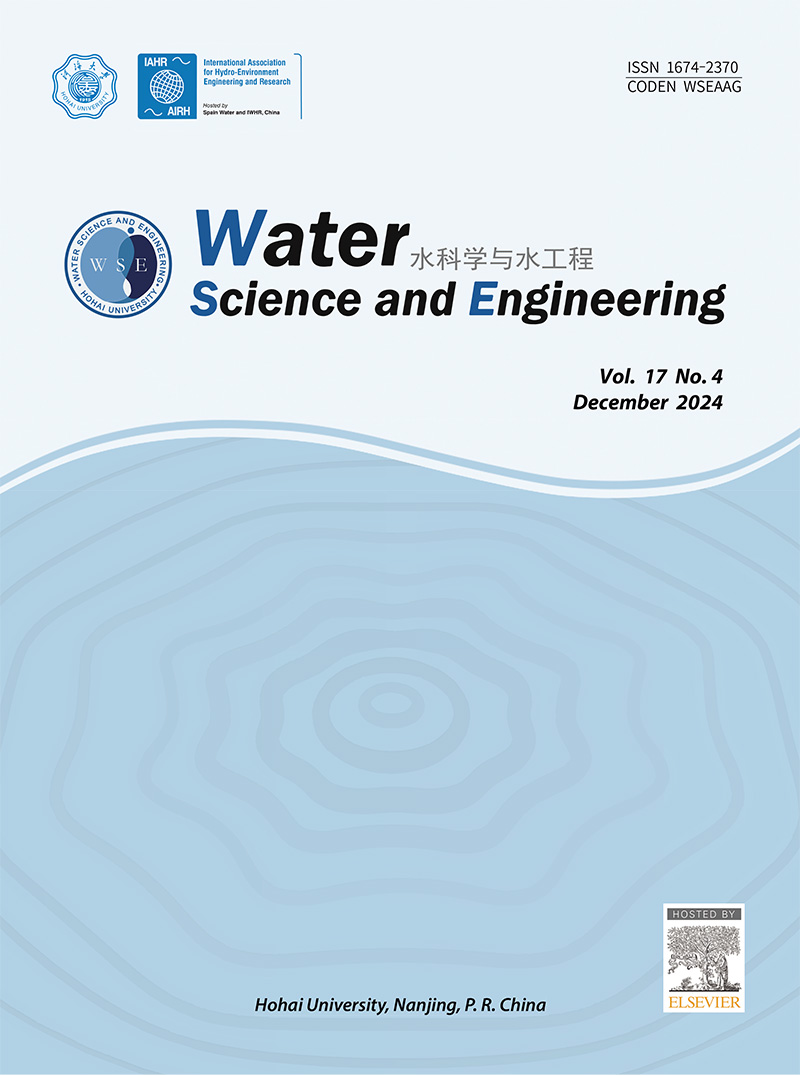直接加热法固定化二氧化锰纳米花对有机污染物的修复作用
IF 4.3
Q1 WATER RESOURCES
引用次数: 0
摘要
将催化剂固定在载体上去除有机污染物是减少废水处理过程中催化剂损失的关键策略。本研究提出了一种快速、经济的直接加热方法,用于在线圈基板上合成二氧化锰纳米花,以去除有机污染物。传统的方法通常需要高功率、昂贵的设备和较长的合成时间。相比之下,直接加热法在优化加热功率和持续时间后,仅在10 min内就成功合成了MnO2纳米花,加热功率约为40 W·h。这些纳米花在60分钟内有效地降解了99%的罗丹明B,并具有一致的可重复性。催化机理认为是MnO2的晶体缺陷产生电子生成H2O2。酸性溶液中的Mn2+离子进一步将H2O2分子解离成羟基自由基(·OH)。该合成方法的高效率和二氧化锰纳米花优异的可重复使用性突出了其作为二氧化锰有机染料去除催化剂的发展前景。本文章由计算机程序翻译,如有差异,请以英文原文为准。
Immobilization of MnO2 nanoflowers on coils using direct heating method for organic pollutant remediation
The immobilization of catalysts on supporting substrates for the removal of organic pollutants is a crucial strategy for mitigating catalyst loss during wastewater treatment. This study presented a rapid and cost-effective direct heating method for synthesizing MnO2 nanoflowers on coil substrates for the removal of organic pollutants. Traditional methods often require high power, expensive equipment, and long synthesis times. In contrast, the direct heating approach successfully synthesized MnO2 nanoflowers in just 10 min with a heating power of approximately 40 W·h after the heating power and duration were optimized. These nanoflowers effectively degraded 99% Rhodamine B in 60 min with consistent repeatability. The catalytic mechanisms are attributed to crystal defects in MnO2, which generate electrons to produce H2O2. Mn2+ ions in the acidic solution further dissociate H2O2 molecules into hydroxyl radicals (·OH). The high efficiency of this synthesis method and the excellent reusability of MnO2 nanoflowers highlight their potential as a promising solution for the development of supporting MnO2 catalysts for organic dye removal applications.
求助全文
通过发布文献求助,成功后即可免费获取论文全文。
去求助
来源期刊

Water science and engineering
WATER RESOURCES-
CiteScore
6.60
自引率
5.00%
发文量
573
审稿时长
50 weeks
期刊介绍:
Water Science and Engineering journal is an international, peer-reviewed research publication covering new concepts, theories, methods, and techniques related to water issues. The journal aims to publish research that helps advance the theoretical and practical understanding of water resources, aquatic environment, aquatic ecology, and water engineering, with emphases placed on the innovation and applicability of science and technology in large-scale hydropower project construction, large river and lake regulation, inter-basin water transfer, hydroelectric energy development, ecological restoration, the development of new materials, and sustainable utilization of water resources.
 求助内容:
求助内容: 应助结果提醒方式:
应助结果提醒方式:


